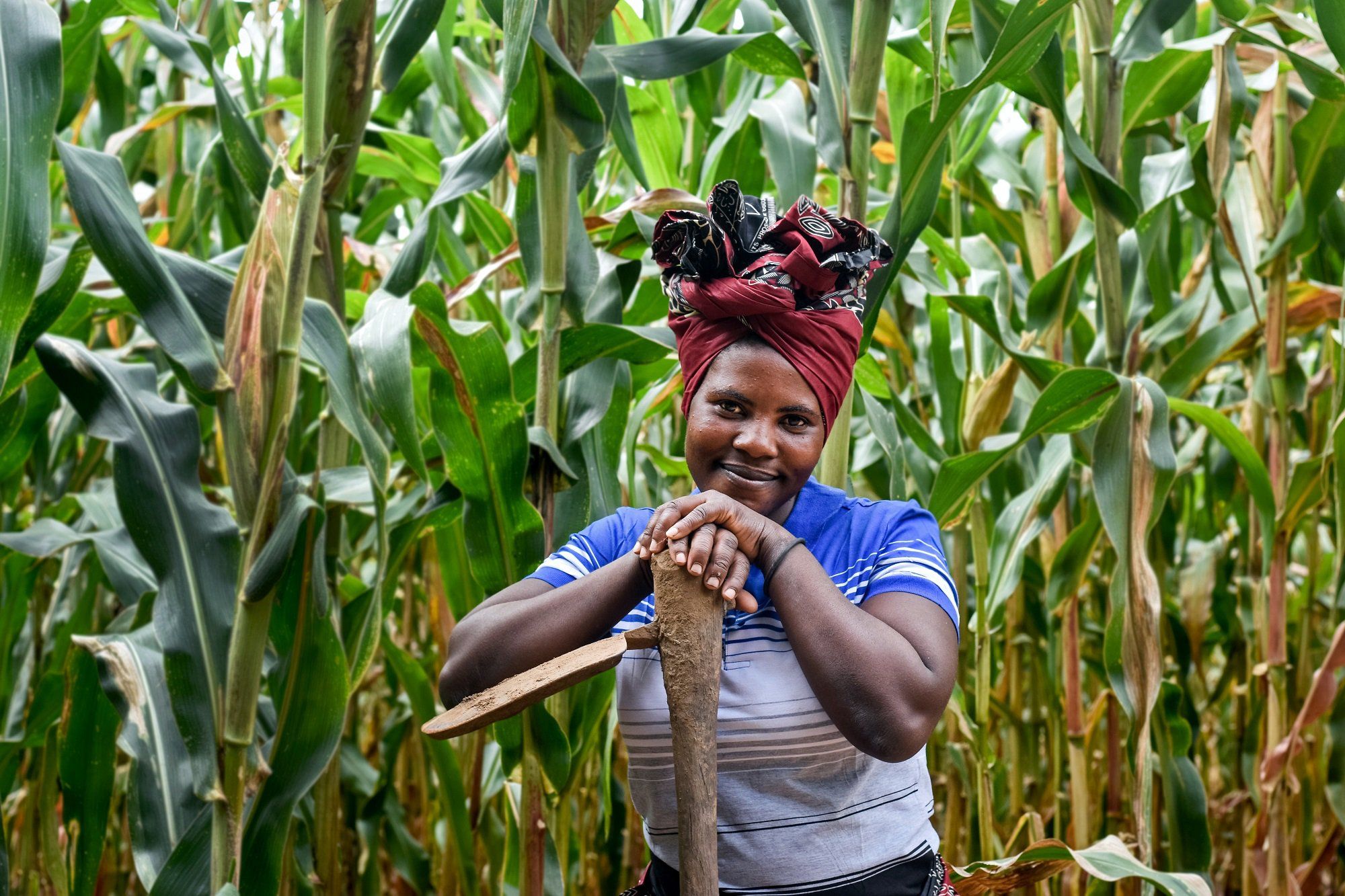December 12, 2024
As the physical hazards associated with climate change grow more severe, there is a pressing need to expand and enhance adaptation finance. While investments in mitigation efforts to reduce and sequester greenhouse gas emissions have gained significant traction from public and private investors, adaptation-focused financial instruments face unique challenges due to a less mature market, perceptions of low returns, and the complex nature of climate risks.
This report provides recommendations for developing effective financial instruments that meet the growing demand for adaptation finance. Over its first decade, The Global Innovation Lab for Climate Finance (The Lab) has supported 78 instruments, including more than 20 with an adaptation focus that have mobilized a collective more than $1.2 billion for adaptation projects.
Still, adaptation projects face persistent challenges to raising capital, including: (1) High perceived risk; (2) Limited investor awareness; and (3) The nascent nature of adaptation and resilience as a mainstream investment thesis. Many adaptation-focused financial instruments also struggle with issues such as a lack of qualified projects in their pipeline, challenges with impact measurement, and the difficulty of pricing climate risk into investment decisions.
Drawing on lessons learned from past instruments, the Lab has identified five key steps for structuring adaptation-focused financial instruments that deliver results:
1. Define your adaptation and resilience thesis
Crafting adaptation-focused financial instruments requires a clear articulation of how investments reduce vulnerability and enhance resilience within local contexts. Since hazards vary across geographies and what constitutes adaptation in one setting may not be applicable in another, proponents must demonstrate how their projects align with specific climate risks in their target environment. Instruments that integrate adaptation co-benefits alongside mitigation activities can also broaden donor and investor engagement.
Cooling as a Service (CaaS) is a pay-per-service model for clean cooling systems, which eliminates upfront investment for customers who instead pay per unit of cooling they use, incentivizing efficient consumption.
CaaS entered the Lab process with a focus on emissions reduction/mitigation. In the process, the team identified significant adaptive co-benefits for health and food systems that came with improving the energy efficiency of cooling systems and shifting to cleaner refrigerants. These benefits included reduced food waste, improved labor force productivity, and decreased loss of medicine dependent on cold chain refrigeration.
The CaaS team subsequently built out a thesis for the instrument’s adaptation and resilience impact. Click here to learn more about CaaS.
2. Build your pipeline with optimal cash flows
Many of the Lab instruments that failed to operationalize struggled because of inadequate project pipelines. Adaptation projects need predictable cash flows to become viable investments, especially in high-risk sectors like water and agriculture. Strategies such as diversifying pipelines, bundling services, and adding mitigation elements can enhance instrument stability and bankability.
Early-stage technical assistance and philanthropic capital are crucial for de-risking projects, attracting investors, and building a demonstration effect for adaptation investments. Additionally, some instruments encounter difficulties when pricing climate risk or avoided costs into their structures, due to challenges in valuing localized climate benefits and securing entities that are willing to pay for these benefits. Instrument proponents should avoid assuming that other entities will pay for adaptation benefits, as this can hinder cash flows and jeopardize an instrument’s financial sustainability.
Climate Resilience and Adaptation Finance and Technology Transfer Facility (CRAFT) is a growth equity fund that invests in companies in developed and developing countries that have proven technologies and solutions for climate resilience and have demonstrated market demand and revenue.
Through direct investment and support from its technical assistance (TA) facility, the fund has created a pipeline of 500+ companies that enhance adaptation and resilience—offering services ranging from weather analytics, precision agriculture, and catastrophe risk modeling, among others.
CRAFT’s support generates a new asset class for adaptation investments and helps scale existing companies into new sectors and markets. Click here to learn more about CRAFT.
3. Engage strategically with funders and structure around risk and returns
Effective adaptation finance aligns financial structures with investor risk/return profiles by using blended capital stacks to lower costs and de-risk investments. Concessional capital plays a crucial role in de-risking investments by providing technical assistance, patient capital, subsidized premiums, and favorable terms to attract a broad range of investors across the spectrum of risk—from funders expecting no returns to those seeking commercial returns.
Successful fundraising for adaptation-focused instruments involves demonstrating that such investments are both impactful and profitable. Fundraising pitches should be tailored toward various investor mandates. Impact-first investors like DFIs and philanthropists are drawn to the social benefits of adaptation, while commercial investors are more receptive to the market potential and financial returns of an instrument.
Catalyst Fund is an impact fund and accelerator providing custom capital and venture-building support to early-stage technology startups that are building a climate-resilient future in Africa.
The fund has a broad investment thesis that spans three verticals: fintech for climate resilience, sustainable livelihoods, and climate-smart essential services.
Catalyst Fund created different briefing materials to frame their investment thesis/pitch for each of the fund’s focus areas. This allowed the team to tailor their engagement with a range of investors across varying mandates. Click here to learn more about Catalyst Fund.
4. Cultivate collaborations and build bridges in your environment
Adaptation projects should collaborate with local stakeholders including financial institutions, government entities, community partners, and technical experts. Leveraging these collaborations secures resources and enhances sustainability through local buy-in. Instruments must also address competition with public entities, such as utility providers, and gaps in project pipelines to remain effective.
Instruments should align with the policy, market, and institutional stakeholder environment in their target environment. Strategic alignment with national adaptation priorities and coordination with regional institutions and banks not only enhances the viability of adaptation projects but also amplifies their impact by building resilience in line with broader climate goals.
Climate Adaptation Notes aimed to increase funding for water and wastewater adaptation projects by combining the construction financing and post-construction refinancing phases into a single instrument.
While it faced political barriers to operationalizing over the long term, Climate Adaptation Notes’s structure forged a partnership between institutional and commercial stakeholders by connecting South Africa’s pension funds to commercial banks through a debt capital markets platform.
With institutional investors assuming some of the credit risk, commercial banks would be able to offer competitive loan pricing and faced fewer liquidity challenges. Click here to learn more about Climate Adaptation Notes.
5. Measure the impact that matters—for you, your pipeline, and your investors
Adaptation finance metrics should balance alignment with donor standards and localized, decision-useful measurements. The current lack of standardized evaluation frameworks for adaptation complicates comparisons across instruments but allows for flexibility in assessing specific project impacts according to donor priorities. As demand for quantitative metrics grows, instruments that deliver robust and credible impact assessments will gain a competitive edge. Currently, many instruments face technological or financial challenges to sufficiently measure their impact.
One Acre Ventures, a subsidiary of One Acre Fund, is a debt and equity fund that coordinates synchronized investments in agri-SMEs in high-value, climate-resilient crop value chains in East Africa.
One Acre Ventures’s impact measurement was modeled after One Acre Fund’s approach to measuring impact of programs with smallholder farmers and relies on data reported by portfolio companies. While metrics on agricultural outputs, job creation, and farmer income are trackable, SRV has found it logistically difficult to monitor more rigorous climate metrics—such as soil nutrient depletion and restoration—as they require resource-intensive and technically rigorous methods.
Instead, One Acre Fund estimates this impact based on data collected elsewhere for the same intervention. Click here to learn more about One Acre Ventures.







